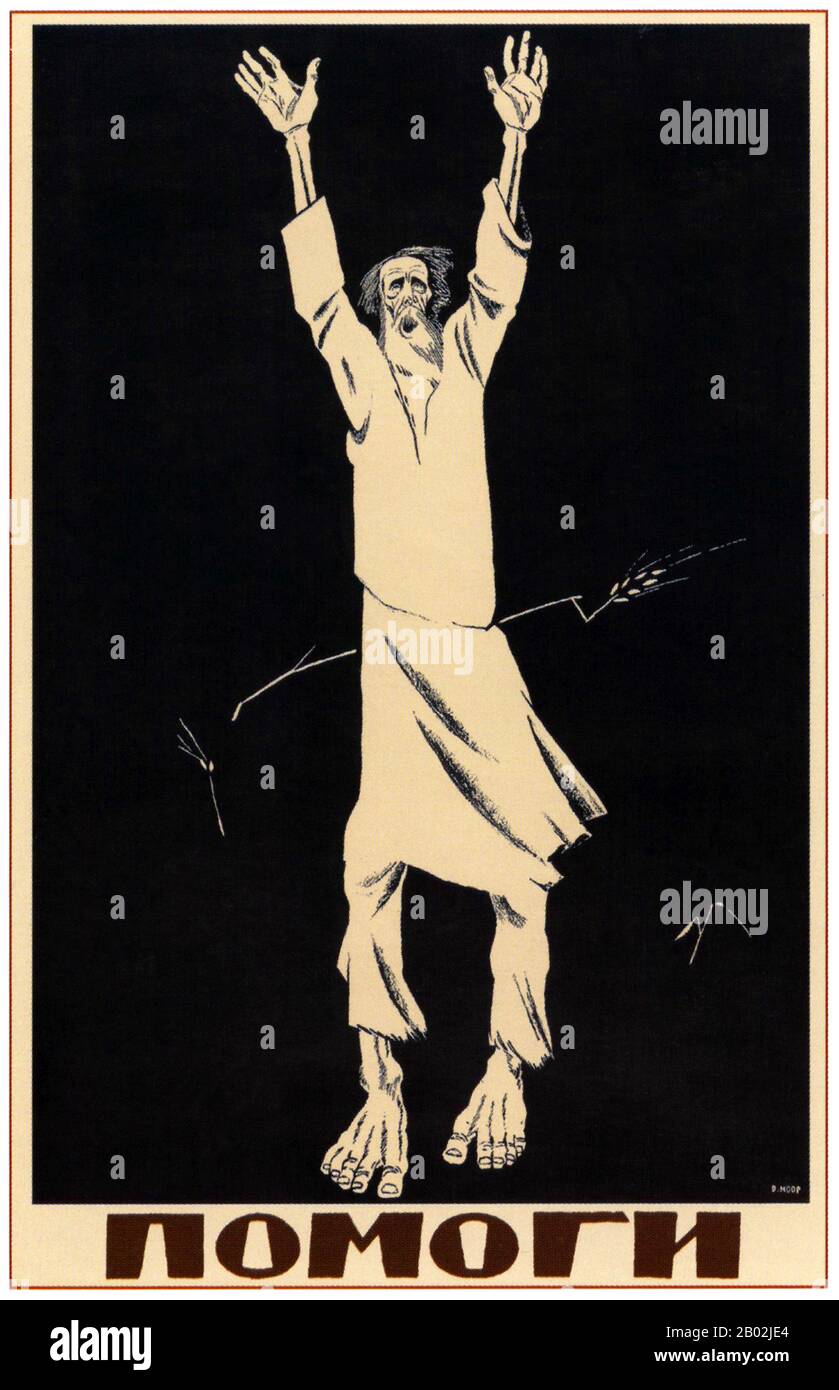The Russian famine of 1921, also known as Povolzhye famine, which began in the early spring of that year and lasted through 1922, was a severe famine that occurred in Bolshevik Russia. The famine, which killed an estimated 6 million people, affected mostly the Volga and Ural River region. The famine resulted from the combined effect of economic disturbance, which had already started during World War I, and continued through the disturbances of the Russian Revolution of 1917 and Russian Civil War with its policy of War Communism, especially prodrazvyorstka, aided furthermore by rail systems th

Image details
Contributor:
CPA Media Pte Ltd / Alamy Stock PhotoImage ID:
2B02JE4File size:
51.2 MB (1.3 MB Compressed download)Releases:
Model - no | Property - noDo I need a release?Dimensions:
3400 x 5268 px | 28.8 x 44.6 cm | 11.3 x 17.6 inches | 300dpiDate taken:
12 August 2014Photographer:
Pictures From HistoryMore information:
This image could have imperfections as it’s either historical or reportage.
The Russian famine of 1921, also known as Povolzhye famine, which began in the early spring of that year and lasted through 1922, was a severe famine that occurred in Bolshevik Russia. The famine, which killed an estimated 6 million people, affected mostly the Volga and Ural River region. The famine resulted from the combined effect of economic disturbance, which had already started during World War I, and continued through the disturbances of the Russian Revolution of 1917 and Russian Civil War with its policy of War Communism, especially prodrazvyorstka, aided furthermore by rail systems that could not move food around efficiently. One of Russia's intermittent droughts that occurred in 1921 aggravated the situation to the level of the national catastrophe. Hunger was so severe that it was doubtful that seed-grain would be sown rather than eaten. At one point, relief agencies had to give grain to the railroad staff to get their supplies moved. The famine was the justification offered for the Bolsheviks' 1922 confiscation of Russian Orthodox Church property in Russia.